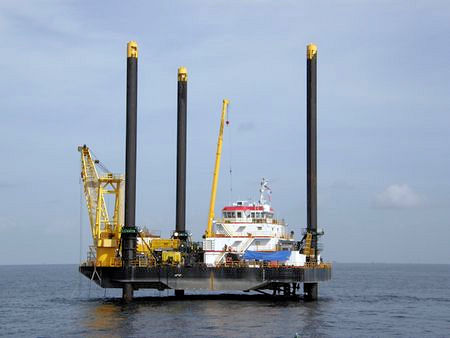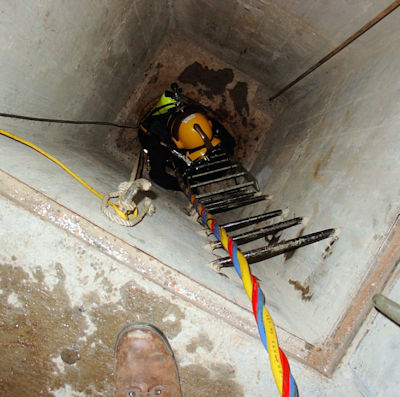Decompression
30.B.04 Dive operations that require surface decompression as an integral part of the dive operation must have a trained competent person (CP)/operator, whose sole purpose is to attend to the chamber operation.
Decompression Sickness (DCS).
- In dive operations where the chamber is required for emergency, first aid, or used for other unexpected recompression events, a team member with other team duties (tender, console operations, etc.) not diving during the current dive may serve as the chamber operator so long as he is specifically trained and competent in hyperbaric chamber operations. If used for the latter purpose, all diving must be suspended during the chamber operations.
- Whenever a chamber is on site, the chamber CP/operator must be capable of communicating with a diving physician.
- Divers completing a recompression dive will remain within 60 minutes drive time from a fully operable and staffed recompression chamber for a minimum of 2 hours after completing the recompression dive.
Coordination with External Operations
30.B.05 Dive operations will be conducted in full coordination with external operations and processes that may impact the safety of the dive.
- When the operation of machinery or release of hazardous energy will affect the diver or dive team safety, the dive supervisor will develop a HECP. > See Section 12. When diving at a facility with an existing HECP, the dive supervisor will review the facility's plan and establish positive control procedures with the facility leader.
- When water traffic, land-based traffic, industrial operations, heavy equipment operation, or other operations exist that present a hazard to the diver or dive team, the dive supervisor must coordinate with the controlling authorities to minimize the hazards. This must include coordination with the USCG, as required, for establishing a safety zone.
30.B.06 Crane operations conducted to support diving operations must follow the requirements of Section 16 of this manual.
- All working dives requiring communications between the divers and topside to direct crane load movements, etc., must be performed in SSA mode.
- The crane operator will take direction from the tender or supervisor directly in communication with the diver.
- Crane operations where the load is placed or removed while a diver is underwater must be considered Critical Lifts and the diver/load director will participate in the Critical Lift Plan development as outlined in Section 16.H.
- If divers are required to perform rigging duties, they must be a qualified rigger and meet the personnel qualifications listed in Section 15.B.
30.B.07 When dives will take place in an area or facility where potential or actual pressure differentials exist (i.e., locks, dams, spillways, powerhouses, etc.), the dive supervisor will develop specific plans and procedures, in coordination with the facility operator, to prevent diver exposure to pressure differentials. The plans and procedures must be site-specific and include the following:
- Identification of all potential exposure points (gate sills, valve openings, holes, etc.);
- Means for identifying whether control structures/mechanisms are fully in place (measurements of stop gates and openings, valve indicators, etc.);
- Methods for checking pressure differential openings (observing current/water flow, remote testing of opening area with objects (rope, sandbags, cinders, etc.);
- Route diver will take from staging area to work area with specific designs to prevent diver and umbilical from uncontrolled pressure differential openings;
- Procedures for immediate emergency pressure equalization or reduction, if possible, and
- Procedures for emergency diver extraction or rescue due to pressure differential exposure, including standby diver deployment precautions.
Knowledge Check Choose the best answer for the question.
30-11. Where, and for how long, must divers completing a recompression dive remain from a fully operable recompression chamber?
You forgot to answer the question!


